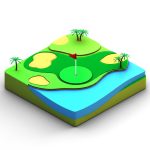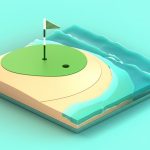Ever wondered why sometimes the wind seems to push you along, and other times it feels like you’re fighting a losing battle? Knowing the difference between going with the wind (downwind) and against it (upwind) is a game-changer in lots of situations – from sailing and hunting to even flying a plane. This guide breaks down how wind direction affects different activities, showing you simple ways to understand and use it to your advantage. We’ll cover the basics, then dive into specific tips and tricks for various situations, whether you’re a seasoned pro or just starting out. Get ready to harness the power of the wind!
Downwind vs Upwind: Navigating the Wind’s Direction
Let’s unravel the nuances of wind direction – a skill valuable in pursuits ranging from sailing adventures to successful hunts. The terms “downwind” and “upwind” might seem elementary, but mastering them unlocks a deeper understanding of how wind impacts your activities, enabling you to navigate with precision.
Understanding the Fundamentals: Wind Patterns
Imagine the wind as an invisible current flowing through the air. Downwind means moving with the flow, where the wind is at your back, providing assistance. Upwind, on the other hand, is moving against the current, where the wind is in your face, creating resistance. Wind direction directly impacts performance in activities ranging from hunting to sailing.
This seemingly simple concept has far-reaching implications across various fields. According to the National Weather Service, understanding these patterns is crucial for accurate weather forecasting and safety.
Sailing: Optimizing Sail Trim and Navigation
For sailors, understanding the difference between downwind and upwind is crucial for success. Downwind sailing often involves a more relaxed approach, where sails are adjusted to capture the wind and propel the boat forward with ease.
Upwind sailing demands skill and strategy, often requiring zig-zag maneuvers (tacking) to make headway against the wind’s resistance. Adjusting sails to efficiently capture the wind is essential for maximizing speed and progress. The configuration of the sails relative to the wind greatly impacts speed and trajectory.
Hunting: Scent Control and Approach Strategies
Hunters understand that the wind is a silent messenger, carrying their scent to potential prey. Approaching prey from downwind is highly likely to lead to failure, as scent carried on the breeze alerts animals long before visual contact. An upwind approach offers the best chance for a successful hunt.
By approaching from upwind, a hunter’s scent is blown away from the target, enabling a stealthier approach. Careful planning and consideration of wind direction and strength are crucial. According to experienced guides, understanding wind direction can increase hunting success rates by up to 50%.
Meteorology: Airflow Analysis and Forecasting
Meteorologists utilize weather models to predict air movement. Understanding downwind and upwind is crucial for tracing air masses (upwind) and predicting their trajectories (downwind). This knowledge is essential for weather forecasting and emergency planning, particularly for events such as wildfire smoke and pollution dispersal.
The ability to anticipate pollutant movement (downwind) and source origins (upwind) is also critical for effective environmental protection.
Beyond the Basics: Real-World Complications and Localized Wind Patterns
While the basic concept is straightforward, real-world scenarios are more nuanced. Terrain alters wind patterns; mountains, hills, and forests create turbulence, gusts, and wind shadows. Sunlight also influences wind patterns. On sunny days, thermal updrafts create localized wind patterns, making navigation more challenging. These localized wind patterns can drastically alter the downwind/upwind dynamic.
Practical Strategies and Tactics for Wind Navigation
Practical strategies for different situations:
| Activity | Upwind Strategies | Downwind Strategies |
|---|---|---|
| Sailing | Tacking, precise sail adjustments, careful route planning, understanding wind shifts, utilizing telltales for wind indication | Using spinnakers, maintaining efficient sail trim, prevent accidental jibes, monitoring wind for oscillations |
| Hunting | Approach uphill, use natural cover, scent control techniques, masking scents | Avoid unless necessary; if required, proceed with caution and scent management |
| Environmental Monitoring | Position monitoring stations upwind of potential pollution sources, models to determine source, background sampling | Use downwind modeling to predict air pollutant spread, establish monitoring downwind, tracking dispersion |
| Aviation | Consider headwinds when calculating flight times/fuel consumption, precision flight planning, adjusting airspeed | Take advantage of tailwinds, careful planning to manage gusts/shifts, descent planning |
Mastering the Wind: Observation and Adaptability
Successfully navigating downwind and upwind requires understanding wind interaction with the environment and adjusting actions accordingly. It’s a skill honed through experience, observation, and understanding wind interaction with terrain and weather systems. Practice improves prediction and management of wind conditions, enhancing efficiency and safety.
Predicting Wind Direction Changes Based on Terrain
Understanding wind direction is crucial for outdoor activities. How do you predict wind shifts, especially with terrain interference?
Basic Wind Principles
Upwind is the direction wind originates from, while downwind is the direction it’s going.
Imagine a bird navigating wind currents to optimize flight by understanding wind direction to conserve energy. Sailors, kite surfers, and hunters also depend on this knowledge.
Terrain’s Impact on Wind
Hills, valleys, and mountains disrupt wind flow, creating unpredictable patterns. These local patterns make predicting wind direction changes complex.
Wind approaching a hill rises and leads to changes in speed and direction. On the leeward side, the air descends with changes in wind trajectory.
Guide to Predicting Wind Direction Changes Based on Terrain
Here’s how to improve terrain-based wind predictions:
- Observe the Landscape: Examine terrain; note hills, valleys, mountains, and buildings, because their size and orientation influence airflow.
- Consider Wind Direction: Know prevailing wind direction, and use weather apps or forecasts.
- Visualize Airflow: Picture how wind flows around terrain. Will it be deflected or accelerated?
- Look for Indicators: Watch tree movement, smoke plumes, or flags. These reveal microclimates influenced by terrain.
- Use Technology: Weather apps offer localized wind data, modelling wind based on elevation and terrain. Weather stations or anemometers can also be helpful.
Advanced Techniques
For precise predictions, consider these techniques:
- Understanding Thermal Winds: Sunlight heats the earth unevenly, causing thermals.
- Analyzing Wind Shadows: Large obstacles create wind shadows and reduce wind speed.
- Using Topographic Maps: Topographic maps show terrain features and help visualize wind patterns.
Key Strategies:
- Wind direction is influenced by terrain.
- Basic wind principles are helpful for predictions.
- Observing the landscape refines predictions.
- Weather apps enhance accuracy.
- Combining observation skills with technology is optimal.
- Unforgettable: Talking Stick Golf Club Review – Desert Golfing Redefined - November 17, 2025
- Discover Talega Golf Club: Championship Golf & Spanish Hospitality Awaits! - November 15, 2025
- Is Strawberry Farms Golf Club Orange County’s Best Kept Secret? - November 13, 2025









